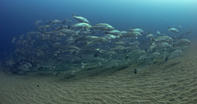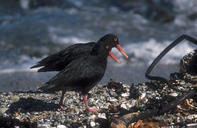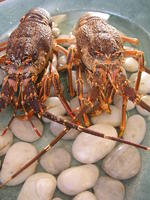Cape Coast Kob Fishing
If you asked the people of the Cape Coast which species of fish was multiplied in the Bible story, they're sure to agree it was the kob, or kabeljou.

It is one of a very few species that still shoals in appreciable numbers along our shore, preferring sandy beaches and bays. They tend to feed just behind the backbreaker line, so the better casters are most likely to hit the jackpot.
When they're biting, nothing works better than sardine bait, but if they aren't biting you might as well sit down with a book. If you do get lucky, remember the responsible fisher's code of taking no more than what you can eat.
Swart Tobie

This is a five-day hike along a section of the West Coast that is perhaps the least known, ending at the Olifants River mouth. Although a slackpacking trail where you don't carry your kit, it is extremely rustic with only basic wind shelters and long-drop loos at the overnight stops.
With an average daily distance of only 1.5 km, there is ample time to swim, laze in the sun, explore the coastal formations, the inland vegetation and the rock pools, and collect mussels (with the requisite permit). It's also guided, so your guide will keep you on the right track as you go. It's named after a local celebrity, the black oystercatcher.
Fish Braai
West Coast seafood and the local culture are special. At those famous west coast braaiplekkies there's a touch more salt, like the salt-of-the-earth people who'll say fishing and farming there are such gambles it's a wonder the Lord allows them at all.
Lunch usually starts at midday, carrying on until you are seriously 'finished and klaar’, The typical 10 courses are all seafood: mussels in white wine, then mussels in garlic butter, then harders (mullet), seafood paella, braated snoek and kabeljou, smoked angelfish, stumpnose, bream and finally crayfish, or 'kreef' as it's called around here.
The 'salad' is chunks of steaming roosterbrood with apricot jam, and maybe some chicken. It's like that story in the Bible, where the fish and the bread just keep coming.
West Coast Kreef

Although the recreational fishing season for kreef (crayfish or West Coast rock lobster) is now severely restricted, few meals can compare with braaing crayfish you have freshly caught yourself. Once upon a time fishers considered them a pest, and simply threw them back into the sea.
They were so plentiful that farmers used wagon loads of kreef for fertiliser. They were considered food fit only for slaves. But the French, those eaters of frogs and snails, developed a taste for these sea cockroaches and so a canning industry sprang up in places like Elands Bay and Lamberts Bay. Today they are the most expensive item on any seafood menu.